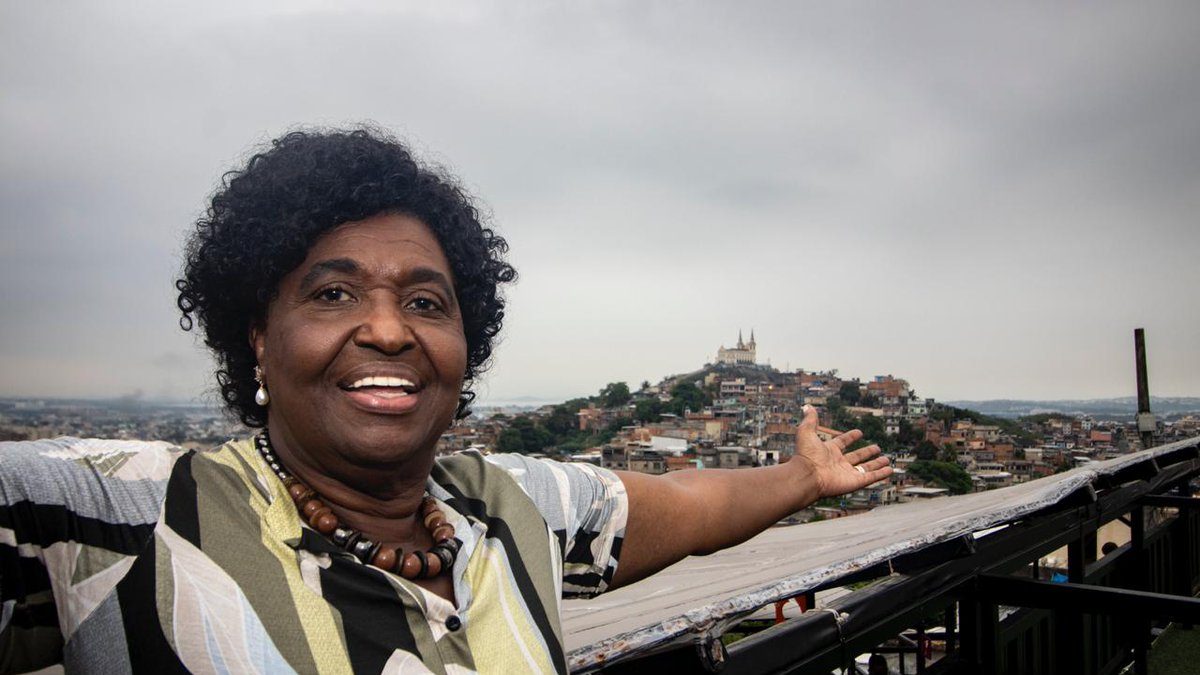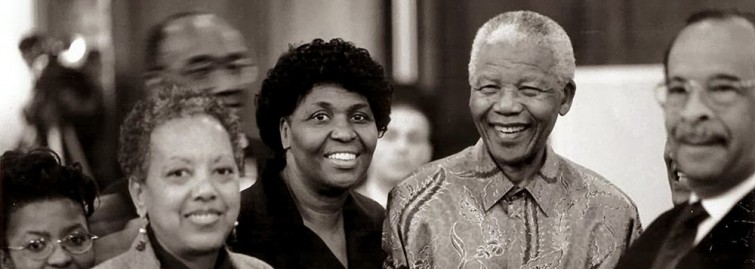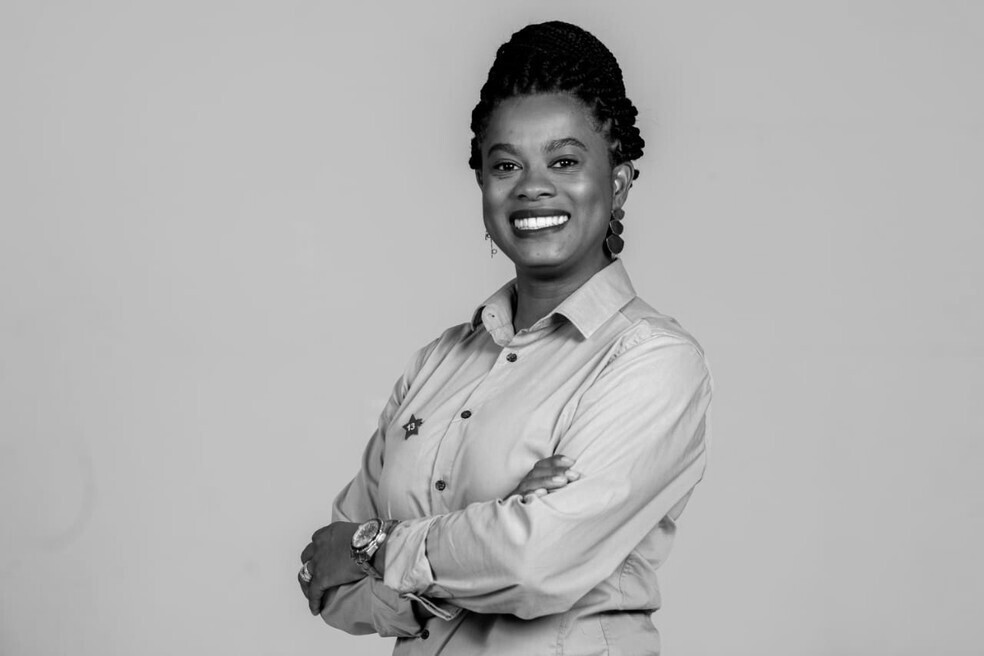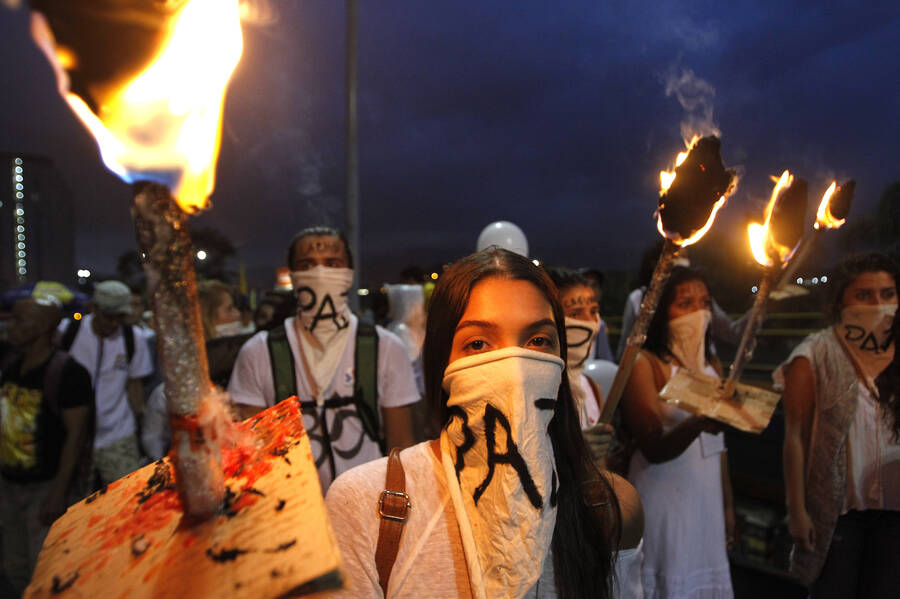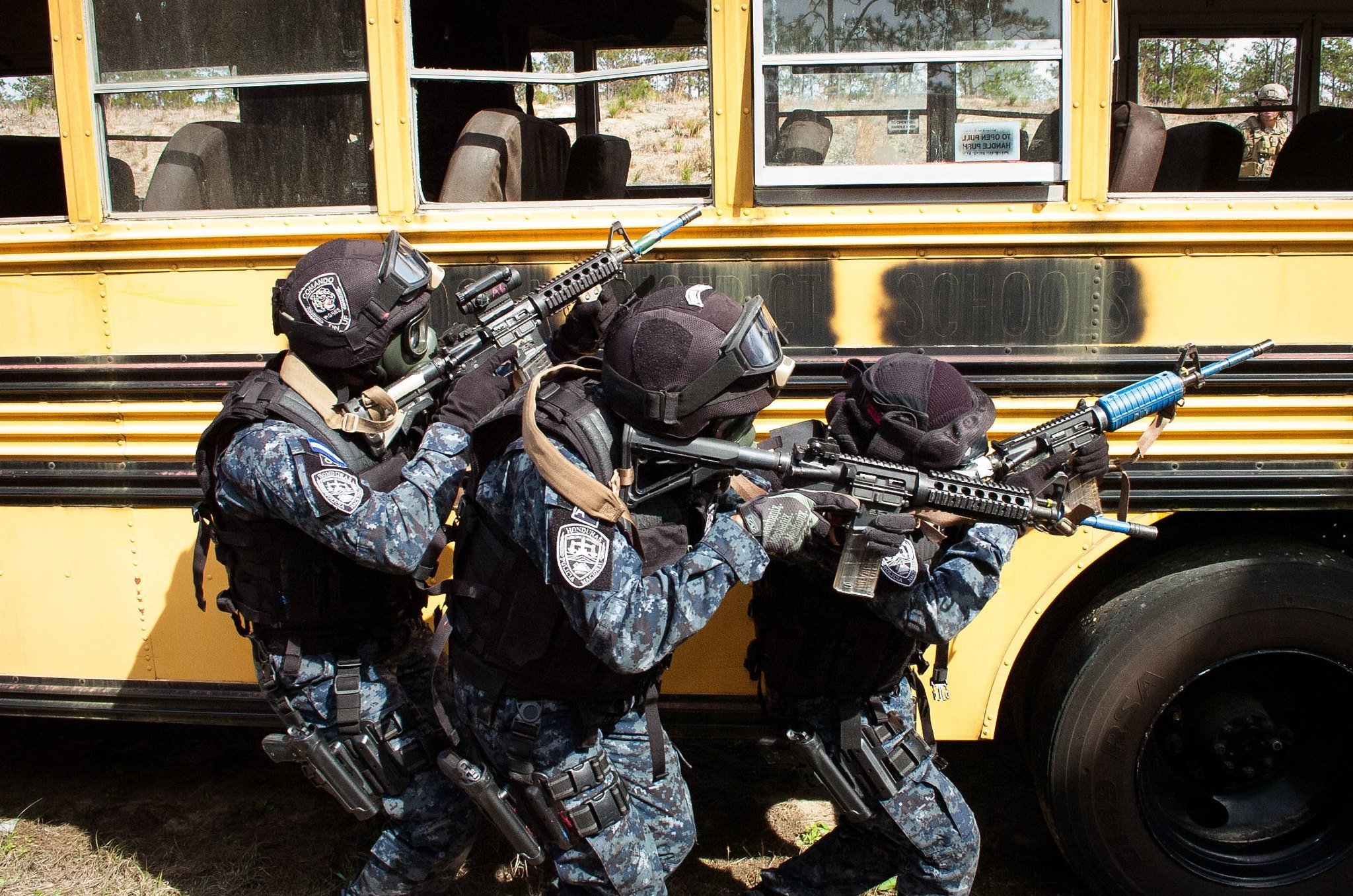Interview: Bruna Rodrigues and the fight against necropolitics
BRIAN MIER , DECEMBER 11, 2020
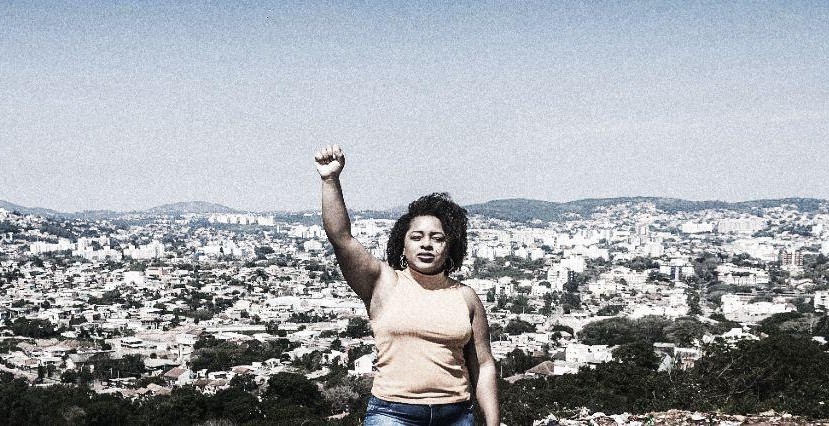
When we say that black lives matter we are saying that we can no longer accept the fact that 83 young black men die every day in Brazil
Interview by Brian Mier
On December 8, 2020, two members of Rio Grande do Sul’s military police entered the house of black rights movement activist Jane Beatriz Machado da Silva, a 60 year old grandmother and community leader in Porto Alegre. They entered illegally, without a search warrant. Shortly afterwards they placed her unconscious body in the trunk of a police car and drove her to a hospital where she was pronounced dead. Her death added to the anger that has been building since the murder of Joao Alberto Silveira “Beto” Freitas, a 40 year old black father of 3. His November 19 murder at the hands of Porto Alegre Carrefour security guards, one of whom was an off-duty military police officer, sparked nation wide protests.
Bruna Rodrigues, 33, is one of 5 newly elected Afro-Brazilian city councilors in Porto Alegre. Together, they comprise the first black caucus in the 247 year history of its city council. A member of the Communist Party of Brazil (Partido Communista do Brasil/PCdoB), Rodrigues is the daughter of a street sweeper, the first member of her family to go to university, and an example of a new generation of left wing politicians that is coming to power through the November 2020 municipal elections. I spoke to her on December 10 about the recent rise in racist violence in Porto Alegre and her plans for office.
Beto Freitas was brutally lynched in a Carrefour parking lot on November 19th and this sparked nationwide protests against the extermination of the Afro-Brazilian population. What has happened in Porto Alegre since then?
It’s important to speak of this in relationship to the moment we are living in. I am a student at Rio Grande do Sul Federal University. I lived in Vila Cruzeiro for nearly my whole life until I was evicted during the construction of the ring road. It is a project that was connected to the World Cup that started in 2010 and hasn’t even been finished yet. So when we talk about the social movements in Porto Alegre, we are also talking about a political project. There is a political project underway. I think this election is part of an ongoing struggle. We’ve been building this movement for a long time, this fight for political representation of black men and women from poor communities, who are living in a very undignified manner. These are people who have have to deal with school closings and lack of doctors in their health clinics – the closure of public health clinics in the middle of the pandemic. They suffer from construction projects that never end. Their access to public services is being continually reduced. It is in this context that we entered the election, speaking about the importance of representation for people like me, as part of this first black caucus in the history of Porto Alegre City Council, representing the desires of this segment of the population. It’s in this political context that the people chose the fight against racism as a central issue.
It is clear to me that this is part of an international movement. It may not have started in the US, but there is a symbol there that resonates here in Brazil. When we say that black lives matter we are saying that we can no longer accept the fact that 83 young black men die every day in Brazil. This incident on the night of November 19 here in Porto Alegre at the Carrefour, on the eve of November 20th, which is National Black Consciousness Day, is connected to what the black population goes through every day here in Porto Alegre and in Rio Grande do Sul. Only black people know what it is like to to be followed around by security guards every time they walk into a supermarket. What happened to Beto happens every day. Maybe not to that extreme level. They don’t kill us inside the supermarkets every day but they torture us inside the supermarkets every day. This killing is also connected to the death of Jane. She was a black woman who died in her community during a conflict with the military police.
Part of the construction of this social movement, which is based on the understanding that politics has to be occupied by people like us, is the understanding that society is structurally racist. Our institutions are racist. When we look at the City Council and see that we make up most of the cleaning and maintenance staff but don’t occupy any of the chairs, it’s a problem. It’s the problem of a society that went through a very cruel period of slavery. This is the legacy of slavery – that we are not part of the structures that have decision making power over our lives.
I am a woman who comes from a generation that had 100% public health coverage, who went to a 100% public school. It was these public services that helped me to decide the path I took in life and that gave me opportunities. It is the color of a young person’s skin which defines whether they will live or die in Porto Alegre, regardless of their social position. We can no longer accept that skin color defines who lives and who dies.
We have elected the first black caucus in the history of Porto Alegre’s city council but the new mayor of Porto Alegre is in direct confrontation with us. We are a young caucus of black city councilors who have no guarantee of our own existence, of our own lives. We haven’t even taken office yet and all we are talking about is death. We are defending our bodies. We can’t talk about what is happening without talking about this societal project that has been killing our people for a long time. We understand that we have to engage in a political battle or the bodies will continue falling. We will continue to confront the bullets, which are “stray” for the others but that always find our bodies. We have to confront the bullets until they fall.
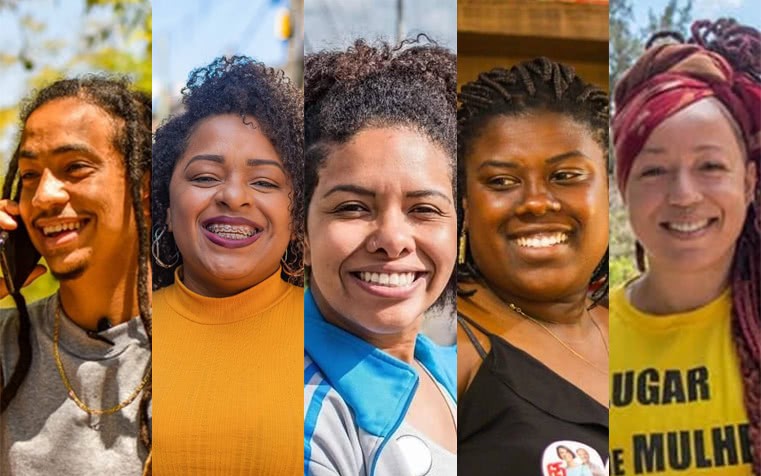
Porto Alegre City Council’s newly elected black caucus
Do you think that since the event at Carrefour, state violence is increasing against the black population in Porto Alegre?
I think it is a reaction from people who cannot accept election results. It’s also a reaction against a process of transformation during which, in a short period of time we’ve entered the universities and modified our surroundings. I am the first woman in my family to enter university. University changed my life. I am the mother of a girl who is nearly 16. My enrollment in university naturalized education for her. Our increased access to public services as a whole increased our quality of life and gave us better social conditions. We don’t learn in school that we can become members of the city council. In fact, the people don’t expect someone like me to become a city councilwoman. But our insertion into these spaces has caused a violent counter reaction.
They always killed us but the difference is that now we have a voice. Now we say that we don’t tolerate this. Resistance was never an option for us – it’s a need. Black people have to resist in order to exist. We are talking about existence. So has violence increased? Of course it’s increased. This offense is an attack against our existence. People say, “violence increased because crime increased”. Those kids who died in Rio de Janeiro last week were just children. The status of child did not save their lives. We have to understand that racism is impregnated in our society. It is a social illness and we have to cure it. Racism isn’t a black person’s problem it’s society’s problem. People who are not black have to be engaged and put themselves on our side. We’ve just elected the first black group of city councilors in the history of Porto Alegre and we don’t know if we will live to the end of our terms. We need to guarantee that we do but we aren’t sure it will happen. The space we are occupying has the mark of a woman who was assassinated. My profile as a city councilwoman is that of a woman who was assassinated in a crime that is still unresolved. Yesterday marked 1000 days since Marielle Franco died and the crime hasn’t been solved. Why? Because it was a black body. That symbolizes a lot to us. It says a lot to us. So this is the scenario we are talking about, this is the violence and the political project. Because in the middle of a pandemic this genocidal project that decides who lives and who dies, this necropolitical project is killing people. It kills people when it closes health clinics, it kills people when it doesn’t allow us to live with dignity. It kills us when it allows police to come into our houses without search warrants. It kills people when it kills our sons. Black women are the ones who lose their sons the most. In fact, to be a black woman and a mother of a young man in the community today is the worst nightmare any woman could have. Your son could be an engineer but if he’s black, it doesn’t matter. If he’s black and crosses paths with the Military Police he becomes a target. We understand that the project behind this is political.
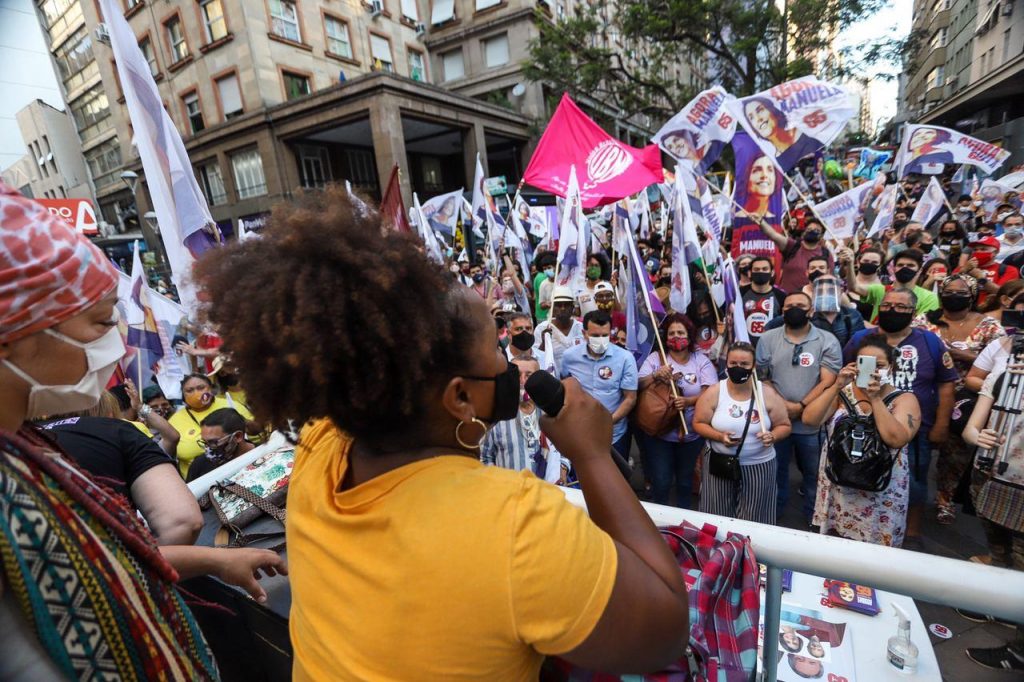
So now you have created a caucus of 5 city councilors. But if you want to get anything done in the city council you need a majority. Furthermore, the military police are controlled by the state and not the city government. I know it’s going to be hard. But what is your plan to fight the state sponsored extermination of black people in Porto Alegre?
The first step is understanding how the political system works. We elected 5 but there are 26 on the other side. The power balance has not changed. If we want to approve a project, for example, we need 19 votes. There are 5 of us. Of course there are allies. There are many people who understand that this issue is important. There are other progressives who were elected, but not enough to change the power balance. But we understand that the first step is occupying this space. 5 city councilors are not going to cause a revolution. But we understand that just being there and being able to speak about our struggle is unprecedented. To be able to leave the cleaning and maintenance department and be able to occupy seats in the city council is nearly a revolutionary process in itself.
We need to understand, first of all, that the balance of power has not changed but we were able to organize a force that made it in and that we have to keep moving forwards. There has never been a black woman elected to the Rio Grande do Sul state legislature. There is a long road ahead of us. We have a custom of revering our ancestors and saying that our steps come from way back. The obstacles are still huge. We have to reorganize our society, we have to re-enchant the people with the idea of occupying political space. There is a project behind the fact that politics has lost credibility with the people. People don’t go out and vote because they think politicians are all the same. So we have a long road ahead to help people understand that these people who only come into the community during election season are part of the political project that is killing us. It isn’t easy to convince the people that political battles are important but this is one of our responsibilities.
The idea that the people can look at City Council and see that there is a cabinet in there that they can approach is important. It’s important that when a city eviction crew arrives knocking on someone’s door – I was evicted during a construction project so I know this first hand – if a politician gets in the middle of it the eviction doesn’t happen. If nobody says that women’s liberation doesn’t exist without universal right to preschool, that security doesn’t exist without full day schooling, we’ll never be able to transform society. Because our kids are occupying the street corners, they are not occupying the schools. We will have a big challenge when this pandemic ends. We will have to bring all of these kids back into the schools. It’s not a natural process. These kids who are out on the streets today because of poverty – if we don’t work hard, they won’t come back to class. Our purpose in City Council is to talk about these issues. If we are going to win or not, if the fascist project will keep moving forwards or not, only time will tell. But our arrival has a purpose. It’s to talk about our people, to tell our story and to talk about how important it is to strengthen public policies, to show examples of how good services change lives. I always say I am an example of politics working. I come from a generation that had 100% public health, 100% public schools and I am studying in a public university. All of this is being attacked right now. The public health system is under attack. Imagine how many people would have died from Covid 19 by now if the public health system didn’t exist. We need policies to deal with hunger. Hunger is back knocking on our doors. So this is what we have arrived for. We position ourselves within this collective anguish of the people who live on the periphery. It is with this eye that we will confront this necropolitics, this fascism and this violent racism.
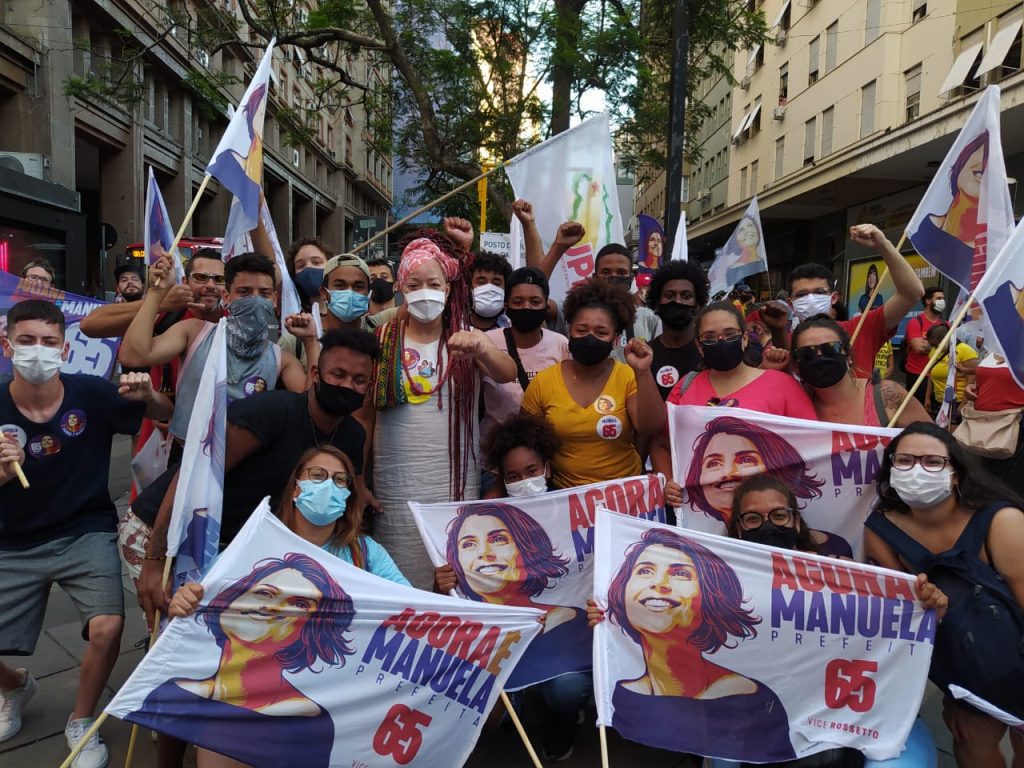
Is there anything else you would like to say?
We created a very beautiful movement here in Porto Alegre. Manuela d’Ávila, our candidate for mayor, spoke about a dream and won over a large part of society. She planted a seed, despite not winning the election. This seed needs nutrients to germinate and flower. And this flower will bloom if we organize the people, if they become re-enchanted with politics and if we occupy politics together with the people. We are going to bring the people with us into the City Council because if we don’t nothing will change. So we are calling out to the people to say that it is important to look at politics together and to let them know that they are not alone. If we walk alone we don’t know how the story will end. If we walk together we know that our victories will be more pronounced and will have more meaning. So that is it. Follow us on the social media, join the movement and help us germinate this seed that was planted, which is made of hope and faith and a warmer and more humane eye on our communities.
Interview: Bruna Rodrigues and the fight against necropolitics
BRIAN MIER , DECEMBER 11, 2020

When we say that black lives matter we are saying that we can no longer accept the fact that 83 young black men die every day in Brazil
Interview by Brian Mier
On December 8, 2020, two members of Rio Grande do Sul’s military police entered the house of black rights movement activist Jane Beatriz Machado da Silva, a 60 year old grandmother and community leader in Porto Alegre. They entered illegally, without a search warrant. Shortly afterwards they placed her unconscious body in the trunk of a police car and drove her to a hospital where she was pronounced dead. Her death added to the anger that has been building since the murder of Joao Alberto Silveira “Beto” Freitas, a 40 year old black father of 3. His November 19 murder at the hands of Porto Alegre Carrefour security guards, one of whom was an off-duty military police officer, sparked nation wide protests.
Bruna Rodrigues, 33, is one of 5 newly elected Afro-Brazilian city councilors in Porto Alegre. Together, they comprise the first black caucus in the 247 year history of its city council. A member of the Communist Party of Brazil (Partido Communista do Brasil/PCdoB), Rodrigues is the daughter of a street sweeper, the first member of her family to go to university, and an example of a new generation of left wing politicians that is coming to power through the November 2020 municipal elections. I spoke to her on December 10 about the recent rise in racist violence in Porto Alegre and her plans for office.
Beto Freitas was brutally lynched in a Carrefour parking lot on November 19th and this sparked nationwide protests against the extermination of the Afro-Brazilian population. What has happened in Porto Alegre since then?
It’s important to speak of this in relationship to the moment we are living in. I am a student at Rio Grande do Sul Federal University. I lived in Vila Cruzeiro for nearly my whole life until I was evicted during the construction of the ring road. It is a project that was connected to the World Cup that started in 2010 and hasn’t even been finished yet. So when we talk about the social movements in Porto Alegre, we are also talking about a political project. There is a political project underway. I think this election is part of an ongoing struggle. We’ve been building this movement for a long time, this fight for political representation of black men and women from poor communities, who are living in a very undignified manner. These are people who have have to deal with school closings and lack of doctors in their health clinics – the closure of public health clinics in the middle of the pandemic. They suffer from construction projects that never end. Their access to public services is being continually reduced. It is in this context that we entered the election, speaking about the importance of representation for people like me, as part of this first black caucus in the history of Porto Alegre City Council, representing the desires of this segment of the population. It’s in this political context that the people chose the fight against racism as a central issue.
It is clear to me that this is part of an international movement. It may not have started in the US, but there is a symbol there that resonates here in Brazil. When we say that black lives matter we are saying that we can no longer accept the fact that 83 young black men die every day in Brazil. This incident on the night of November 19 here in Porto Alegre at the Carrefour, on the eve of November 20th, which is National Black Consciousness Day, is connected to what the black population goes through every day here in Porto Alegre and in Rio Grande do Sul. Only black people know what it is like to to be followed around by security guards every time they walk into a supermarket. What happened to Beto happens every day. Maybe not to that extreme level. They don’t kill us inside the supermarkets every day but they torture us inside the supermarkets every day. This killing is also connected to the death of Jane. She was a black woman who died in her community during a conflict with the military police.
Part of the construction of this social movement, which is based on the understanding that politics has to be occupied by people like us, is the understanding that society is structurally racist. Our institutions are racist. When we look at the City Council and see that we make up most of the cleaning and maintenance staff but don’t occupy any of the chairs, it’s a problem. It’s the problem of a society that went through a very cruel period of slavery. This is the legacy of slavery – that we are not part of the structures that have decision making power over our lives.
I am a woman who comes from a generation that had 100% public health coverage, who went to a 100% public school. It was these public services that helped me to decide the path I took in life and that gave me opportunities. It is the color of a young person’s skin which defines whether they will live or die in Porto Alegre, regardless of their social position. We can no longer accept that skin color defines who lives and who dies.
We have elected the first black caucus in the history of Porto Alegre’s city council but the new mayor of Porto Alegre is in direct confrontation with us. We are a young caucus of black city councilors who have no guarantee of our own existence, of our own lives. We haven’t even taken office yet and all we are talking about is death. We are defending our bodies. We can’t talk about what is happening without talking about this societal project that has been killing our people for a long time. We understand that we have to engage in a political battle or the bodies will continue falling. We will continue to confront the bullets, which are “stray” for the others but that always find our bodies. We have to confront the bullets until they fall.

Porto Alegre City Council’s newly elected black caucus
Do you think that since the event at Carrefour, state violence is increasing against the black population in Porto Alegre?
I think it is a reaction from people who cannot accept election results. It’s also a reaction against a process of transformation during which, in a short period of time we’ve entered the universities and modified our surroundings. I am the first woman in my family to enter university. University changed my life. I am the mother of a girl who is nearly 16. My enrollment in university naturalized education for her. Our increased access to public services as a whole increased our quality of life and gave us better social conditions. We don’t learn in school that we can become members of the city council. In fact, the people don’t expect someone like me to become a city councilwoman. But our insertion into these spaces has caused a violent counter reaction.
They always killed us but the difference is that now we have a voice. Now we say that we don’t tolerate this. Resistance was never an option for us – it’s a need. Black people have to resist in order to exist. We are talking about existence. So has violence increased? Of course it’s increased. This offense is an attack against our existence. People say, “violence increased because crime increased”. Those kids who died in Rio de Janeiro last week were just children. The status of child did not save their lives. We have to understand that racism is impregnated in our society. It is a social illness and we have to cure it. Racism isn’t a black person’s problem it’s society’s problem. People who are not black have to be engaged and put themselves on our side. We’ve just elected the first black group of city councilors in the history of Porto Alegre and we don’t know if we will live to the end of our terms. We need to guarantee that we do but we aren’t sure it will happen. The space we are occupying has the mark of a woman who was assassinated. My profile as a city councilwoman is that of a woman who was assassinated in a crime that is still unresolved. Yesterday marked 1000 days since Marielle Franco died and the crime hasn’t been solved. Why? Because it was a black body. That symbolizes a lot to us. It says a lot to us. So this is the scenario we are talking about, this is the violence and the political project. Because in the middle of a pandemic this genocidal project that decides who lives and who dies, this necropolitical project is killing people. It kills people when it closes health clinics, it kills people when it doesn’t allow us to live with dignity. It kills us when it allows police to come into our houses without search warrants. It kills people when it kills our sons. Black women are the ones who lose their sons the most. In fact, to be a black woman and a mother of a young man in the community today is the worst nightmare any woman could have. Your son could be an engineer but if he’s black, it doesn’t matter. If he’s black and crosses paths with the Military Police he becomes a target. We understand that the project behind this is political.

So now you have created a caucus of 5 city councilors. But if you want to get anything done in the city council you need a majority. Furthermore, the military police are controlled by the state and not the city government. I know it’s going to be hard. But what is your plan to fight the state sponsored extermination of black people in Porto Alegre?
The first step is understanding how the political system works. We elected 5 but there are 26 on the other side. The power balance has not changed. If we want to approve a project, for example, we need 19 votes. There are 5 of us. Of course there are allies. There are many people who understand that this issue is important. There are other progressives who were elected, but not enough to change the power balance. But we understand that the first step is occupying this space. 5 city councilors are not going to cause a revolution. But we understand that just being there and being able to speak about our struggle is unprecedented. To be able to leave the cleaning and maintenance department and be able to occupy seats in the city council is nearly a revolutionary process in itself.
We need to understand, first of all, that the balance of power has not changed but we were able to organize a force that made it in and that we have to keep moving forwards. There has never been a black woman elected to the Rio Grande do Sul state legislature. There is a long road ahead of us. We have a custom of revering our ancestors and saying that our steps come from way back. The obstacles are still huge. We have to reorganize our society, we have to re-enchant the people with the idea of occupying political space. There is a project behind the fact that politics has lost credibility with the people. People don’t go out and vote because they think politicians are all the same. So we have a long road ahead to help people understand that these people who only come into the community during election season are part of the political project that is killing us. It isn’t easy to convince the people that political battles are important but this is one of our responsibilities.
The idea that the people can look at City Council and see that there is a cabinet in there that they can approach is important. It’s important that when a city eviction crew arrives knocking on someone’s door – I was evicted during a construction project so I know this first hand – if a politician gets in the middle of it the eviction doesn’t happen. If nobody says that women’s liberation doesn’t exist without universal right to preschool, that security doesn’t exist without full day schooling, we’ll never be able to transform society. Because our kids are occupying the street corners, they are not occupying the schools. We will have a big challenge when this pandemic ends. We will have to bring all of these kids back into the schools. It’s not a natural process. These kids who are out on the streets today because of poverty – if we don’t work hard, they won’t come back to class. Our purpose in City Council is to talk about these issues. If we are going to win or not, if the fascist project will keep moving forwards or not, only time will tell. But our arrival has a purpose. It’s to talk about our people, to tell our story and to talk about how important it is to strengthen public policies, to show examples of how good services change lives. I always say I am an example of politics working. I come from a generation that had 100% public health, 100% public schools and I am studying in a public university. All of this is being attacked right now. The public health system is under attack. Imagine how many people would have died from Covid 19 by now if the public health system didn’t exist. We need policies to deal with hunger. Hunger is back knocking on our doors. So this is what we have arrived for. We position ourselves within this collective anguish of the people who live on the periphery. It is with this eye that we will confront this necropolitics, this fascism and this violent racism.

Is there anything else you would like to say?
We created a very beautiful movement here in Porto Alegre. Manuela d’Ávila, our candidate for mayor, spoke about a dream and won over a large part of society. She planted a seed, despite not winning the election. This seed needs nutrients to germinate and flower. And this flower will bloom if we organize the people, if they become re-enchanted with politics and if we occupy politics together with the people. We are going to bring the people with us into the City Council because if we don’t nothing will change. So we are calling out to the people to say that it is important to look at politics together and to let them know that they are not alone. If we walk alone we don’t know how the story will end. If we walk together we know that our victories will be more pronounced and will have more meaning. So that is it. Follow us on the social media, join the movement and help us germinate this seed that was planted, which is made of hope and faith and a warmer and more humane eye on our communities.
Interview: Bruna Rodrigues and the fight against necropolitics
